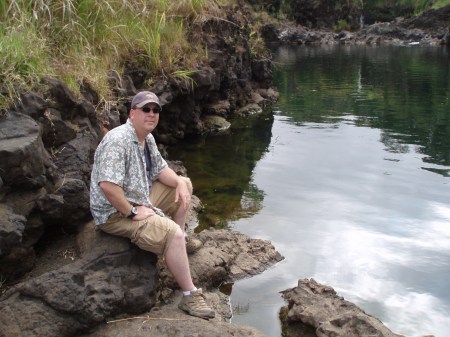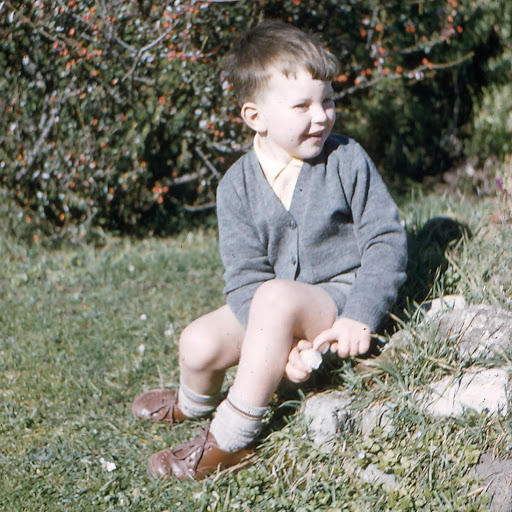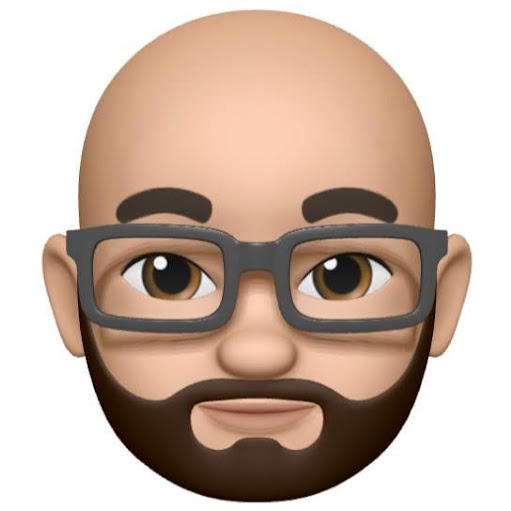Charles E Hunt
age ~72
from Davis, CA
- Also known as:
-
- Charles U Hunt
- Carla M Hunt
- Carla D Hunt
- Phone and address:
-
35125 County Road 31, Davis, CA 95616
(530)7568645
Charles Hunt Phones & Addresses
- 35125 County Road 31, Davis, CA 95616 • (530)7568645
- Ithaca, NY
- Salt Lake City, UT
Lawyers & Attorneys

Charles Hunt - Lawyer
view sourceOffice:
The Hartford
Specialties:
Insurance Law
ISLN:
906301751
Admitted:
1977
University:
Fordham University, B.A.
Law School:
Fordham University, J.D.
License Records
Charles A. Hunt
License #:
EI.0005111 - Expired
Category:
Civil Engineer
Issued Date:
Jan 1, 1900
Expiration Date:
Sep 30, 2001
Charles A Hunt
Address:
Salt Lake City, UT
License #:
299691-6303 - Expired
Category:
Security Companies & Guards
Issued Date:
Mar 23, 1994
Expiration Date:
Mar 26, 1995
Type:
Unarmed Private Security Officer
Charles Aaron Hunt
Address:
Salt Lake City, UT
License #:
5422082-5505 - Expired
Category:
Electrician
Issued Date:
Oct 7, 2003
Expiration Date:
Nov 30, 2008
Type:
Apprentice Electrician
Charles A Hunt
Address:
6104 W Brookhollow Dr, West Valley, UT 84128
License #:
37085 - Expired
Issued Date:
Sep 28, 2006
Renew Date:
Sep 28, 2006
Type:
Electrical Apprentice
Us Patents
-
Fabricating Structures Using Chemo-Mechanical Polishing And Chemically-Selective Endpoint Detection
view source -
US Patent:6465357, Oct 15, 2002
-
Filed:Jul 5, 2001
-
Appl. No.:09/900299
-
Inventors:Jeffrey J. Peterson - Folsom CA
Charles E. Hunt - Davis CA -
Assignee:The Regents of the University of California - Oakland CA
-
International Classification:H01L 21311
-
US Classification:438694, 438 52, 438739
-
Abstract:One embodiment of the present invention provides a process that uses selective etching to form a structure on a silicon substrate. The process starts by receiving the silicon substrate with a first layer composed of a first material, which includes voids created by a first etching operation. The process then forms a second layer composed of a second material over the first layer, so that the a second layer fills in portions of voids in the first layer created by the first etching operation. Next, the process performs a chemo-mechanical polishing operation on the second layer down to the first layer so that only remaining portions of the second layer, within the voids created by the first etching operation, remain. The system then forms a third layer composed of a third material over the first layer and the remaining portions of the second layer, and performs a second etching operation using a selective etchant to remove the remaining portions of the second layer, thereby creating voids between the first layer and the third layer.
-
Structures Using Chemo-Mechanical Polishing And Chemically-Selective Endpoint Detection
view source -
US Patent:6545299, Apr 8, 2003
-
Filed:Jun 18, 2002
-
Appl. No.:10/174625
-
Inventors:Jeffrey J. Peterson - Folsom CA
Charles E. Hunt - Davis CA -
Assignee:The Regents of the University of California - Oakland CA
-
International Classification:H01L 31072
-
US Classification:257183, 257 65, 257 55, 257 19, 257200, 257616
-
Abstract:One embodiment of the present invention provides a process that uses selective etching to form a structure on a silicon substrate. The process starts by receiving the silicon substrate with a first layer composed of a first material, which includes voids created by a first etching operation. The process then forms a second layer composed of a second material over the first layer, so that the second layer fills in portions of voids in the first layer created by the first etching operation. Next, the process performs a chemo-mechanical polishing operation on the second layer down to the first layer so that only remaining portions of the second layer, within the voids created by the first etching operation, remain. The system then forms a third layer composed of a third material over the first layer and the remaining portions of the second layer, and performs a second etching operation using a selective etchant to remove the remaining portions of the second layer, thereby creating voids between the first layer and the third layer.
-
Method Of Fabricating Three-Dimensional Components Using Endpoint Detection
view source -
US Patent:6559058, May 6, 2003
-
Filed:Jan 31, 2002
-
Appl. No.:10/061501
-
Inventors:Jeffrey J. Peterson - Folsom CA
Charles E. Hunt - Davis CA -
Assignee:The Regents of the University of California - Oakland CA
-
International Classification:H01L 21302
-
US Classification:438710, 438 82, 438 77, 438459
-
Abstract:One embodiment of the present invention provides a system for using selective etching to form three-dimensional components on a substrate. The system operates by receiving a substrate composed of a first material. Next, a second layer composed of a second material is formed on selected portions of the substrate. A third layer composed of a third material is then formed over the substrate and the second layer. Finally, an etching operation using a selective etchant is used to remove the second layer, thereby leaving the substrate, which forms a first active layer, and leaving the third layer, which forms a second active layer.
-
Method And Apparatus For Fabricating Structures Using Chemically Selective Endpoint Detection
view source -
US Patent:6642154, Nov 4, 2003
-
Filed:Jul 5, 2001
-
Appl. No.:09/900300
-
Inventors:Jeffrey J. Peterson - Folsom CA
Charles E. Hunt - Davis CA -
Assignee:The Regents of the University of California - Oakland CA
-
International Classification:H01L 21302
-
US Classification:438734, 438700
-
Abstract:One embodiment of the present invention provides a process for selective etching during semiconductor manufacturing. The process starts by receiving a silicon substrate with a first layer composed of a first material, which is covered by a second layer composed of a second material. The process then performs a first etching operation that etches some but not all of the second layer, so that a portion of the second layer remains covering the first layer. Next, the system performs a second etching operation to selectively etch through the remaining portion of the second layer using a selective etchant. The etch rate of the selective etchant through the second material is faster than an etch rate of the selective etchant through the first material, so that the second etching operation etches through the remaining portion of the second layer and stops at the first layer.
-
Fabrication Of Optical Components Using Si, Sige, Sigec, And Chemical Endpoint Detection
view source -
US Patent:6800212, Oct 5, 2004
-
Filed:May 15, 2002
-
Appl. No.:10/146278
-
Inventors:Jeffrey J. Peterson - Folsom CA
Charles E. Hunt - Davis CA -
Assignee:The Regents of the University of California - Oakland CA
-
International Classification:B29D 1100
-
US Classification:216 24
-
Abstract:One embodiment of the present invention provides a system to facilitate using selective etching to form optical components on a circuit device. The system operates by receiving a substrate composed of a first material including a buffer layer composed of a second material. The system forms a sacrificial layer composed of a third material on the buffer layer. Next, the system forms an optical fiber core composed of a fourth material on the sacrificial layer. After the optical fiber core has been formed, the system performs an etching operation using a selective etchant to remove the sacrificial layer. The system also applies a cladding layer to the optical fiber core.
-
Fabrication Of Electronic Magnetic, Optical, Chemical, And Mechanical Systems Using Chemical Endpoint Detection
view source -
US Patent:6818137, Nov 16, 2004
-
Filed:May 15, 2002
-
Appl. No.:10/146279
-
Inventors:Jeffrey J. Peterson - Folsom CA
Charles E. Hunt - Davis CA -
Assignee:The Regents of the University of California - Oakland CA
-
International Classification:C23F 100
-
US Classification:216 2, 216 11
-
Abstract:One embodiment of the present invention provides a system that facilitates construction of electromagnetic, optical, chemical, and mechanical systems using chemical endpoint detection. The system operates by receiving a system description that specifies multiple components, including a first component and a second component. The system fabricates the first component and the second component using selected construction materials. The system also creates a first interconnection structure on the first component and a second interconnection structure on the second component. These interconnection structures can be created using a sacrificial layer and chemical endpoint detection. Next, the system brings the first component and the second component together by connecting the first interconnection structure and the second interconnection structure. These interconnection structures align the first component to the second component so that accurate alignment can be achieved.
-
Method And Apparatus For Determining Layer Thickness And Composition Using Ellipsometric Evaluation
view source -
US Patent:6884640, Apr 26, 2005
-
Filed:May 13, 2003
-
Appl. No.:10/437878
-
Inventors:Jeffrey J. Peterson - Austin TX, US
Charles E. Hunt - Davis CA, US
Peter J. Bjeletich - Davis CA, US -
Assignee:The Regents of the University of California - Oakland CA
-
International Classification:H01L021/66
-
US Classification:438 14, 438 12, 438 16, 438 17, 438 18
-
Abstract:One embodiment of the present invention provides a system that determines the composition of a layer within an integrated device. The system operates by first receiving the integrated device. Next, the system measures properties of the layer using electromagnetic radiation. The properties of the layer measured are used to determine an index of refraction for the layer. The system then solves for the composition of the layer using the index of refraction.
-
Method For Co-Fabricating Strained And Relaxed Crystalline And Poly-Crystalline Structures
view source -
US Patent:6972245, Dec 6, 2005
-
Filed:May 15, 2003
-
Appl. No.:10/439748
-
Inventors:Jeffrey J. Peterson - Austin TX, US
Charles E. Hunt - Davis CA, US -
Assignee:The Regents of the University of California - Oakland CA
-
International Classification:H01L021/20
-
US Classification:438478, 438933, 438938
-
Abstract:One embodiment of the present invention provides a system for co-fabricating strained and relaxed crystalline, poly-crystalline, and amorphous structures in an integrated circuit device using common fabrication steps. The system operates by first receiving a substrate. The system then fabricates multiple layers on this substrate. A layer within these multiple layers includes both strained structures and relaxed structures. These strained structures and relaxed structures are fabricated simultaneously using common fabrication steps.
Isbn (Books And Publications)


Geology of Soils; Their Evolution, Classification, and Uses
view sourceAuthor
Charles Butler Hunt
ISBN #
0716702533

The Colorado River Region and John Wesley Powell
view sourceAuthor
Charles Butler Hunt
ISBN #
0898755565

Lessons in Capitular Masonry and the Capitular Rite 1929
view sourceAuthor
Charles C. Hunt
ISBN #
0766156761


Medicine Doctors

Charles A. Hunt Ii
view sourceSpecialties:
Thoracic Surgery, General Surgery
Work:
Alabama Vein Center
700 Montgomery Hwy STE 210, Birmingham, AL 35216
(205)8230151 (phone), (205)8235218 (fax)
700 Montgomery Hwy STE 210, Birmingham, AL 35216
(205)8230151 (phone), (205)8235218 (fax)
Education:
Medical School
Indiana University School of Medicine
Graduated: 1996
Indiana University School of Medicine
Graduated: 1996
Languages:
English
Description:
Dr. Hunt II graduated from the Indiana University School of Medicine in 1996. He works in Vestavia, AL and specializes in Thoracic Surgery and General Surgery.
Name / Title
Company / Classification
Phones & Addresses
Director , Vice-President
Shallowater Senior Citizens Association, Incorporated
Incorporator
CALVARY TRIO, INC
THRONE OF GRACE BIBLE CHURCH INC
ENERPRO SERVICES, INC
HUNT PLUMBING, INC
ONE TRUCK TRANSPORT LC
ELAM HOLDINGS, LLC
FARLEY BROTHERS ENTERPRISES, INC
Plaxo

Charles Hunt
view sourceBoynton Beach, FLPresident at Smart Solutions Past: Cost Accounting Director at Bluegreen, AVP, Cost Analysis and Profitability Improvement at...

Charles Hunt
view sourceMainly Moscow, sometimes Stockbridge.GLEX Driver at Freelance Own boss, freelancing on the GLEX.

Charles Hunt
view sourceCZ Farms
Classmates

Charles Hunt (Hunt)
view sourceSchools:
Lyle High School Lyle WA 1979-1983
Community:
Barbara Griffiths, Phyllis Roth, Lee Walker, Roger Snow, Ronald Cox
Biography:
Life
I live in New Jersey with my wife and two kids and one smelly dog
I am MSGT ...

Charles Hunt
view sourceSchools:
Penns Valley High School Spring Mills PA 1979-1983
Community:
Lenora Hosterman

Charles Hunt
view sourceSchools:
Kimball High School Kimball MN 1996-2000
Community:
Forest Linn, Dorothy Voss, Daniel Ask

Charles Hunt
view sourceSchools:
Pierre Moran Middle School Elkhart IN 1974-1978
Community:
Don Ciucki, Sandra Whisler, Ralph Thomas, Brian Sternal, Ray Collins

Charles Hunt
view sourceSchools:
Spring Garden High School Spring Garden AL 1984-1988
Community:
John Acker, Cynthia Easterwood, Greg Cothran

Charles Hunt
view sourceSchools:
Snowflake High School Snowflake AZ 1988-1992
Community:
Elissia Johnston, Mack Brewer

Charles Hunt
view sourceSchools:
Olney High School Philadelphia PA 1974-1978
Community:
Arlene Craighead, Judy Banks

Charles Bigworm Hunt
view source
Charles Gary Hunt
view source
Lit Charles Hunt
view source
Charles Hunt Jr.
view source
Charles Tony Hunt
view source
Charles Bunky Hunt
view source
Charles Spectacularcab Hunt
view source
Charles Daniel Hunt
view sourceYoutube
Myspace
Flickr
Googleplus

Charles Hunt
Education:
Clarence High School, Hobart Matriculation College, Bellerive Primary School

Charles Hunt
Work:
FedEx Express - Material Handler
Education:
UWRF - Education
Tagline:
Warden of the East
Bragging Rights:
Survived an attack by a rogue AKE.

Charles Hunt
Work:
Ascii Interactive

Charles Hunt
Work:
11:1 entertainment - Ceo/recording artist
Bragging Rights:
Birth name of Amazing 6 Octave R&B/Hophop/Rock phenom, CHAY

Charles Hunt
Relationship:
Single
Tagline:
I have a football husky built but cute just looking for some cool ass people
Bragging Rights:
Just graduated from college

Charles Hunt

Charles Hunt

Charles Hunt
Get Report for Charles E Hunt from Davis, CA, age ~72



















